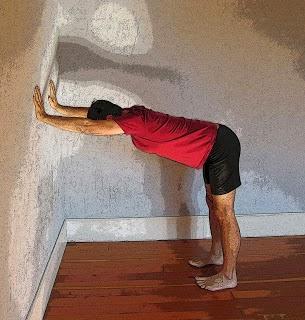 Q: I have a student who has reflux, has been to a doctor and has been told it is because the valve in her stomach is too small to keep acid from leaking out. After class she started feel the reflux and nausea. For her to safely and comfortably participate in a group class, what asanas should she avoid or modify? I'm guessing any inversions, along with being careful with twists that typically compress the digestive organs?
Q: I have a student who has reflux, has been to a doctor and has been told it is because the valve in her stomach is too small to keep acid from leaking out. After class she started feel the reflux and nausea. For her to safely and comfortably participate in a group class, what asanas should she avoid or modify? I'm guessing any inversions, along with being careful with twists that typically compress the digestive organs?A: Reflux, or more accurately gastro-esophageal reflux disease (GERD), is actually quite common. The name itself gives you some information about what is going on: fluid from the stomach sack (gastro part) is “refluxing” or backwashing up into the esophagus, the tube that connects the mouth to the stomach sack. Food and fluid is supposed to be on a one-way trip, but with GERD, something is going on that allows the stomach fluids, which are quite acidic, to move up in the wrong direction back into the esophagus. The acidity of the stomach juices, essential to digesting and breaking down your food, can burn and inflame the lining of esophagus, which is not designed to handle stomach acids. Sometimes GERD is a result of the esophageal sphincter, the muscular valve that separates the esophagus from the stomach and normally allows one-way traffic, being too loose and relaxed (not tight). It then permits the backflow. In addition, the opening in the diaphragm, the main breathing muscle, that permits the esophagus to travel from the chest area into belly area, can sometimes be too large, which can allow for the stomach sack to slide up, or herniate, a bit into the chest area. This tends to make the esophageal sphincter less effective in its job, too.
Someone with GERD can have a variety of symptoms, but by far the most common is heartburn. Your relationship to gravity can improve or worsen the symptoms of GERD. If you are standing upright, gravity works to keep the stomach acids down in the stomach and not up in the esophagus. However, if you are lying flat on your back or on your belly, or even worse, upside down, gravity will work against the normal flow and can contribute to worsening symptoms.Therefore, the first thing I have done for my students with active GERD symptoms is to use blankets to create as slight ramp for them to lay on when we are doing floor work on the back or belly. This keeps just enough of a gravitational gradient that they can tolerate 15 minutes on their backs without stimulating symptoms. You can modify some partial inversions, such as Uttanasana, Prasarita Padottanasana, and Adho Muka Svanasana, to keep the chest and belly parallel with the floor or higher. For example, Half Downward-Facing Dog pose at the Wall is as a good alternative for full Downward-Facing Dog pose. You can do Legs up the Wall pose (Viparita Karani) with a ramp for the head, chest, and belly, and with no support under the hips. However, full inversions, such as Headstand and Shoulderstand, usually need to be put in mothballs until the practitioner’s GERD symptoms are treated adequately with the help of their doctor.
You can do Legs up the Wall pose (Viparita Karani) with a ramp for the head, chest, and belly, and with no support under the hips. However, full inversions, such as Headstand and Shoulderstand, usually need to be put in mothballs until the practitioner’s GERD symptoms are treated adequately with the help of their doctor.
As for twists and side-bends that might increase the pressure inside the abdominal cavity and contribute the backflow into the esophagus, I have not seen this as a big deal for my students with GERD, although it is theoretically possible. My advice with these kinds of poses is to do them dynamically, for example, with a seated twist, entering on the inhalation and exiting on the exhalation, without holding it. Or, enter the twists or side bends gradually, shy of your maximum, and observe the effect on the GERD symptoms. If all is quiet, then consider going a bit deeper and observing again. You get the idea! And mentally focusing on your breath in certain ways can sometimes help to keep your body more relaxed and, theoretically, according to the yoga tradition, keep your body juices flowing downward. I encourage my students with GERD to visualize the energy of the body moving from head to pelvis on the exhalation. This would encourage the inward wind known as the apana vayu to move in its desired downward direction. Although this technique subtle, some students report it to be helpful.The good news is that you can effectively and easily modify your own practice or that of your students with GERD so all of the great benefits of a well-rounded yoga practice are available without aggravating the GERD! For any of our readers out there who have GERD, what works and does not work for you? We’d love to hear!
—Baxter
Subscribe to YOGA FOR HEALTHY AGING by Email ° Follow Yoga for Healthy Aging on Facebook

